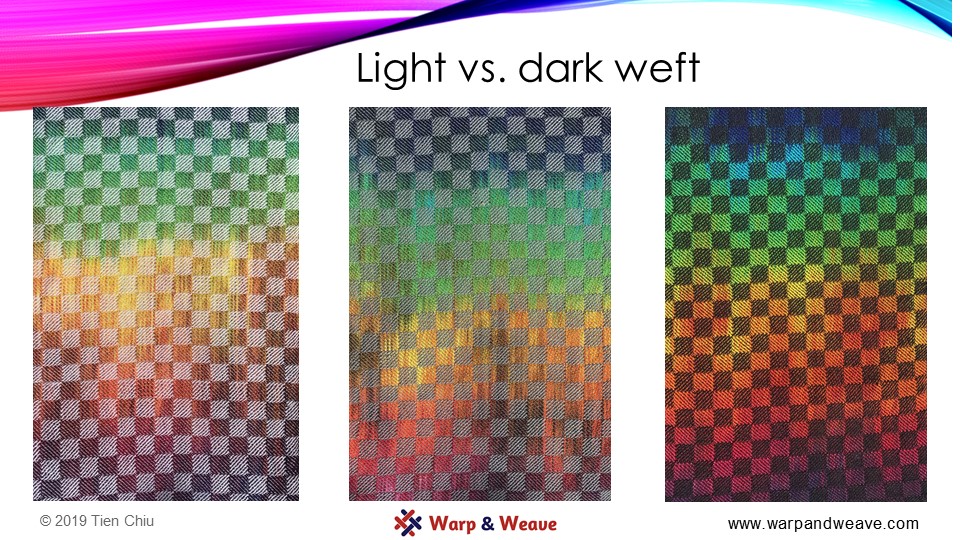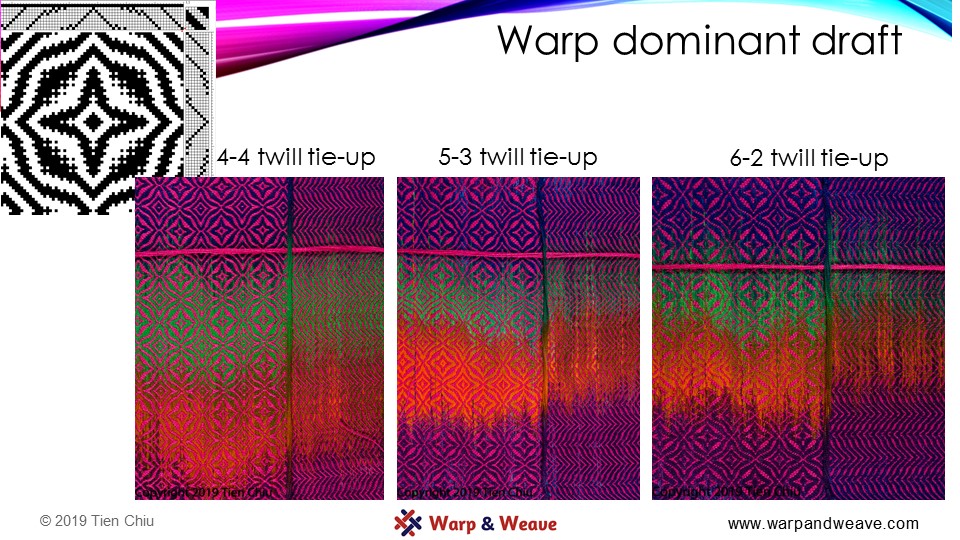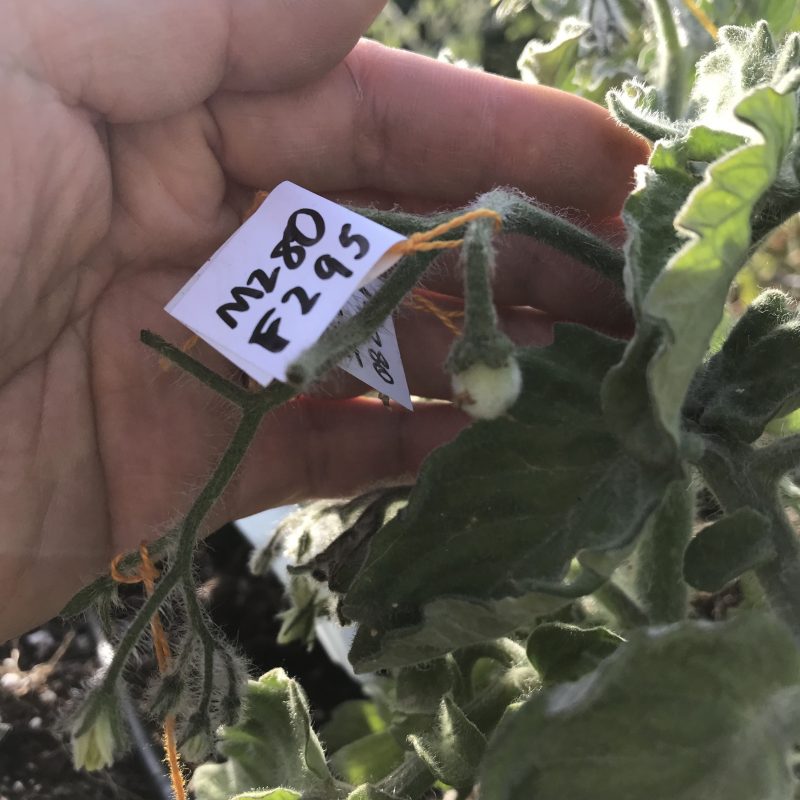I know it’s been awhile, but I’ve been heads-down working on my seminar and workshop courses for ANWG. I’m pleased to say that they’re now complete, and both are going to be fantastic. (Yes, I’m well out of the “worst-ever” phase!)
The workshop course covers color and color mixing in weaving, and the painted warp seminar is an overview of designing with color in painted warps. Both come with handouts summarizing the content, so students don’t have to frantically take notes the entire time.
Both courses embody my “art science” mission, which is summarized on this slide:

I’m particularly proud of my painted-warp presentation. I wove nearly 100 samples while researching painted warps, and while I have by no means exhausted the potential of the topic, I now know quite a bit on the topic. Plus, I have a lot of great eye candy!
I’m planning to develop the presentation into a full online course later this year. Here are a few teaser slides.
This one shows the effect of light wefts vs. dark wefts (click to see the larger version – if reading by email, you may have to go to the blog post on my website – sorry!)

The brain tends to react to light patches as if they were brightly lit areas, and to dark areas as if they were poorly lit areas. Since, in our evolutionary history, things have been lit from the top (i.e. by the sun), the brain assumes light areas are on top, dark areas on the bottom.
So if you use a light-colored weft, weft-dominant areas will appear to be on top, forcing the warp-dominant areas into the background. If you use a darker weft, it will sink to the bottom, pushing the warp-dominant areas to the top.
The brain is more interested in things on the top (accessible) than things on the bottom (likely inaccessible), so it pays more attention to the stuff on the top.
The practical upshot of which is, if you use a lighter weft, the eye will look at the weft and not the warp.
This slide is a little less intellectually complicated, but makes great eye candy:

It shows the effect of a progressively more warp-dominant draft. Here I’ve taken a warp painted in the same set of colors, and woven three samples in the same threading and treadling, but changing the tie-up to be progressively more warp-dominant to show how changing the proportions of warp vs. weft changes the appearance.
(If you are interested in learning more about what I teach, or want to read some of my free articles about color in weaving, hop on over to my teaching site, warpandweave.com!)
Meanwhile, in total world domination-land (what am I doing wasting time on weaving, anyway, when there are worlds to conquer??), I am almost done with my first round of cross-pollinations – which is to say, I have done two cross-pollinations with almost every plant in my spreadsheet of desired cross-pollinations. Next up is to do the second-tier crosses, the ones that sound interesting but which I’m less sure I want to pursue. Also to check and see which cross-pollinations didn’t “take,” and redo them.
Some of the cross-pollinations, though, clearly did “take”. Like this one:

This one is a cross between plant 280 (which provided the pollen) and plant 295 (the “female” plant, which is bearing the fruit). I use plant numbers to prevent the FBI, the Justice League, and the Avengers from figuring out what I’m really up to and foiling my evil plans. Just kidding! It’s much easier and quicker, and results in smaller labels than trying to write up the entire variety description on a label going onto a tiny flower. (At least, that’s my cover story!)
Looking it up in my spreadsheet, 280 is a 5th-generation plant from a cross that was fuzzy with red and yellow striped fruit. All I know (so far) is that it’s fuzzy and has striped fruit when green. If it turns out that I don’t like the plant for some reason – maybe the fruit taste bad, or they turn out to be an ugly chocolate brown or something – no harm! I just won’t save and plant the seed. But if I do like it…I have a cross between it and Fuzzy Mix to turn loose upon the world. (Look upon my works, ye mighty, and despair!)
Meanwhile, I have harvested nearly all of my garlic. I had terrible trouble with garlic rust this year, so I harvested early. I don’t have photos of the crop yet, but the bulbs are almost cured, so after I return from ANWG I will take photos of the crop. Despite the rust, I have a ton of garlic (that’s what happens when you plant 20+ varieties), so no worries about shortages this year! I had dreams of a grand garlic taste-off, but an early experiment with a friend led to the conclusion that after tasting four kinds of garlic, the only thing you can taste – even after rinsing your mouth and eating all the bread, parsley, and other palate cleansers you possibly can – is garlic, even if you don’t eat any more garlic for the rest of the day! So there is simply no way to taste 20 kinds of garlic at once. Ah well. I suppose I’ll simply have to enjoy them one by one. Photos once I have cured and trimmed all the bulbs.
Off to ANWG! My flight leaves in a few hours.
